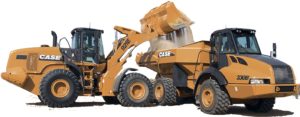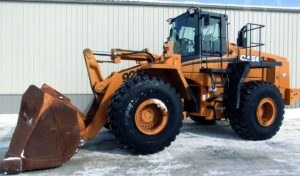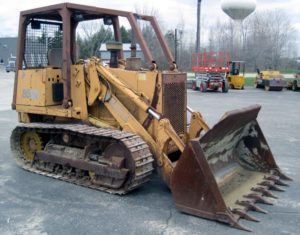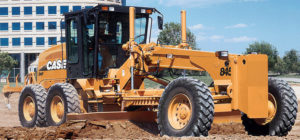INSTANT DOWNLOAD (add to cart)
1,000+ total pages, bookmarked, Searchable, Printable, high quality PDF
87551885A – 921E Wheel Loader Repair Manual.pdf – 813 pages
87659898 EN-US – 921E Tier 3 Wheel Loader Parts Catalog.pdf – 784 pages
5-5800 – 921E Hydraulic Schematic.pdf
Complete workshop & service manual with electrical wiring diagrams for Case Wheel Loader 921E. It’s the same service manual used by dealers that guaranteed to be fully functional and intact without any missing page.
This Case Wheel Loader 921E service & repair manual (including maintenance, overhaul, disassembling & assembling, adjustment, tune-up, operation, inspecting, diagnostic & troubleshooting…) is divided into different sections. Each section covers a specific component or system with detailed illustrations. A table of contents is placed at the beginning of each section. Pages are easily found by category, and each page is expandable for great detail. The printer-ready PDF documents work like a charm on all kinds of devices.
EXCERPT:
Table of Contents
Description Section No. Form No.
General Tab 1
Section Index – General 5-5380
Standard Torque Specifications 1001 8-71603
Fluids and Lubricants 1002 5-5390
Metric Conversion Chart 1003 7-52950
Engines Tab 2
Section Index – Engines 5-5400
Engine and Radiator Removal and Installation 2000 5-5410
Stall Tests 2002 5-5420
After Cooler 2003 5-5430
For Engine Repair See Your Cummins Dealer
Fuel System Tab 3
Section Index – Fuel System 5-5440
For Fuel System Repair, See Your Cummins Dealer
Electrical Tab 4
Section Index – Electrical 5-5450
Removal and Installation of Starter and Alternator 4001 5-5460
Electrical Specifications and Troubleshooting 4002 5-5470
Batteries 4003 6-42331
Instrument Cluster and Equipment Fault Codes 4005 5-5480
Steering Tab 5
Section Index – Steering 5-5490
Removal and Installation of Steering Components 5001 5-5500
Steering Specifications, Pressure Checks, and Troubleshooting 5002 5-5510
Steering Control Valve 5003 5-5520
Steering Cylinders 5005 5-5530
Center Pivot 5006 5-5540
Auxiliary Steering Motor and Pump 5008 6-42430
Power Train Tab 6
Section Index – Power Train 5-5550
Removal and Installation of Power Train Components 6001 5-5560
Transmission Specifications, Pressure Checks, and Troubleshooting 6002 5-5570
Transmission 6003 5-5580
Front and Rear Axle 6004 5-5590
Drive Shafts, Center Bearing, and Universal Joints 6005 5-5600
Wheels and Tires 6006 5-5610
Transmission Control Valve 6007 6-42501
Brakes Tab 7
Section Index – Brakes 5-5620
Removal and Installation of Brake Components 7001 5-5630
Hydraulic Brake Troubleshooting 7002 5-5640
Parking Brake 7008 5-5650
Hydraulics Tab 8
Section Index – Hydraulics 5-5660
How to Read Symbols in a Hydraulic Schematic 8000 5-5670
Removal and Installation of Hydraulic Components 8001 5-5680
Hydraulic Specifications, Troubleshooting, and Pressure Checks 8002 5-5690
Cleaning the Hydraulic System 8003 5-5700
Hydraulic Pump 8004 5-5710
Loader Control Valve 8005 5-5720
Cylinders 8006 5-5730
Mounted Equipment Tab 9
Section Index – Mounted Equipment 5-5740
Air Conditioning Troubleshooting and System Checks 9002 5-5750
Air Conditioner System Service 9003 5-5760
Removal and Installation of Air Conditioning and Heater Components 9004 5-5770
Loader 9006 5-5780
The Rollover Protective Structure (ROPS) or Cab Structural Frame (CSF) 9007 5-5790
Cab Glass Installation 9010 6-42710
Electrical Schematic Foldouts and Hydraulic Schematic Foldout In Rear Pocket 5-5800
…
SERVICE BRAKE AND PARKING BRAKE ACCUMULATORS
Removal
1. Park the machine on a level surface and lower the loader bucket to the floor. Stop the engine.
2. Put blocks on both sides of each tire to prevent machine movement.
3. Make sure the service brake accumulators (1) and the parking brake accumulator (2) are
completely discharged. Push down and release the brake pedal at least 30 times.
4. Turn the master disconnect switch to the OFF position.
5. Remove the left and right cab skirts located under the cab or canopy to gain access to
accumulators.
6. To release the pressure on the parking brake accumulator, the line at the accumulator must be
SLOWLY cracked open. A pan will be needed to catch the hydraulic oil.
7. Connect a drain hose to the quick disconnect couplings in each brake circuit to release any
pressure in the brake circuit.
8. Clean the brake accumulators (1), parking brake accumulator (2) and lines. Refer to illustration on page 7.
9. Put identification tags on the line that is connected to the parking brake accumulator (2).
10. Connect a vacuum pump to the hydraulic reservoir. Start the vacuum pump.
11. Disconnect the tubes from both brake accumulators (1).
12. Loosen the clamp stud (8) on the accumulator clamp (7).
13. Remove the accumulators (1) from the accumulator clamps (7).
14. Install plugs in the tubes.
15. Disconnect the hose from parking brake accumulator (2).
16. Remove the nut (3), remove the parking brake accumulator (2).
17. Install a plug in the hose.
…





